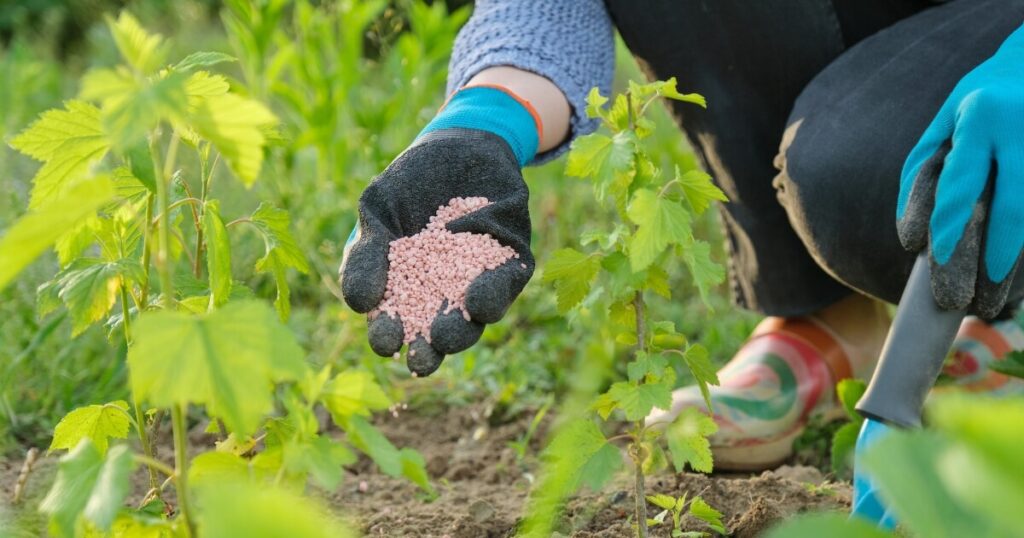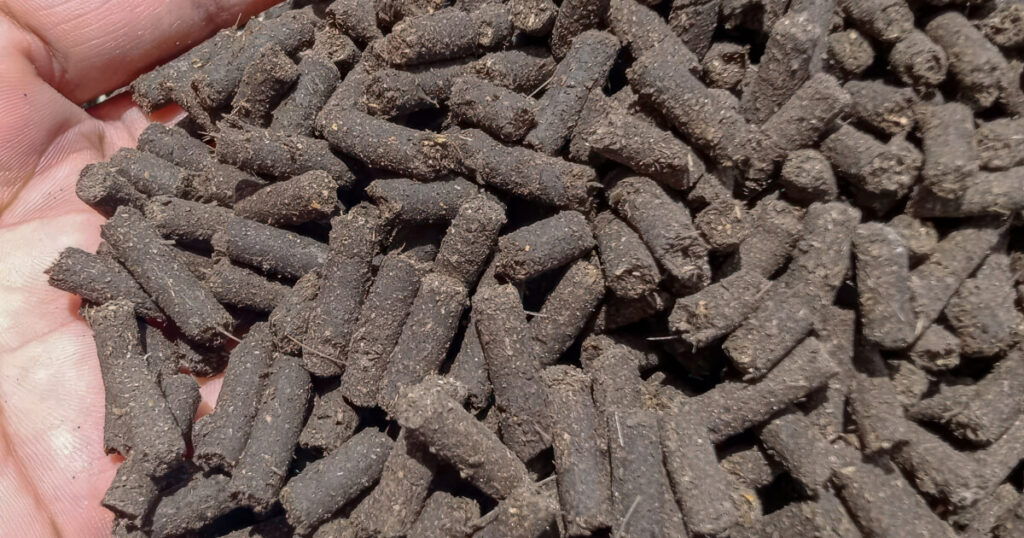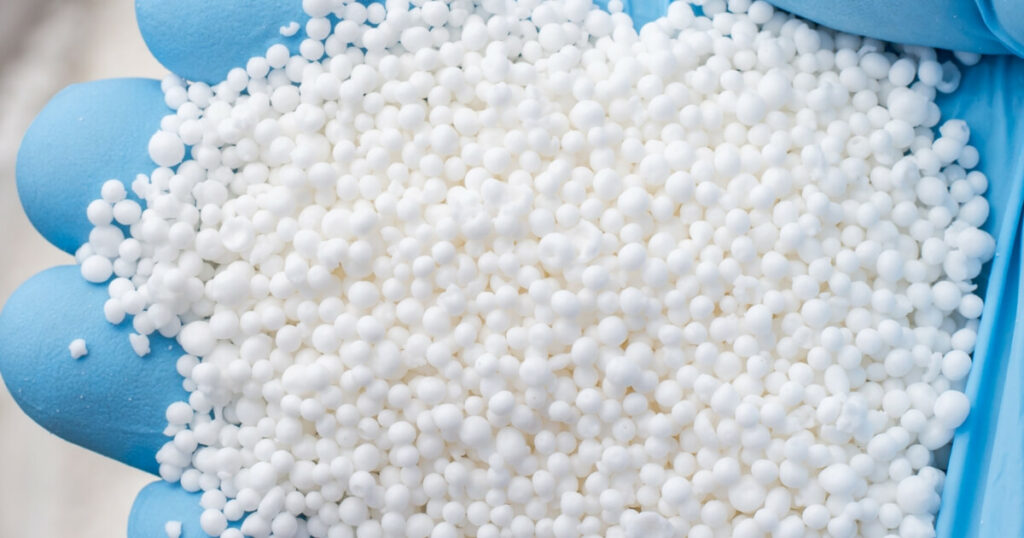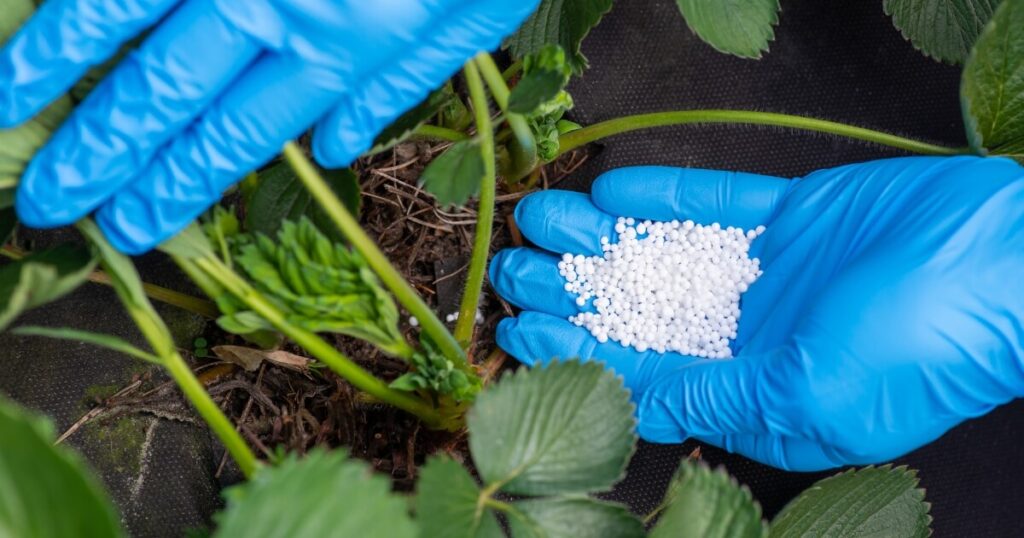I believe fertilizers are essential in your gardening toolkit, much like the right pair of gloves or a good shovel. They can help give you a vibrant and productive garden throughout the growing season, so why would you want to avoid them?

Yes, you’ve read about all the negative things about synthetic fertilizers, but there are organic options that can put those worries to rest.
Whether you’ve been gardening for years or just starting to flex your gardening muscles with a few potted plants, I’ll explain everything you need to know about fertilizers, the different types available, and how to use them effectively to avoid any mad scientist mishaps.
What Are Fertilizers?
Fertilizers act as a plant multi-vitamin, supplementing the existing nutrients in your soil.
Over time, even the richest soil gets depleted as plants gobble up nutrients during their growth. By adding fertilizer, you’re restocking the pantry, so to speak, allowing your plants continuous access to essential nutrients for producing lush foliage, vivid flowers, and abundant fruits or veggies.
When shopping for fertilizers, you’ll often come across labels with three numbers, such as 10-10-10 or 5-3-2. These figures are shorthand for the percentages of nitrogen (N), phosphorus (P), and potassium (K)—the big three nutrients that support your plant’s needs:
- Nitrogen (N): This element is all about promoting leafy growth. Nitrogen helps plants develop lush, green foliage.
- Phosphorus (P): Phosphorus helps robust root development and helps plants set flowers and fruits.
- Potassium (K): Potassium acts like a plant immune system booster, aiding in disease resistance and overall plant strength. You might also hear this being called Potash in gardening.
But there’s more to fertilizer than just N-P-K. Plants also need a variety of micronutrients, like calcium, magnesium, iron, and zinc, in smaller quantities. Think of these as the special seasoning that brings out the best in your plants.
Types of Fertilizers
You’ll find fertilizers in different forms, such as liquids, granules, spikes, and organic options like fish emulsion or worm castings. Each has its own set of benefits and instructions for use. Some are general-purpose, while others are designed specifically for certain types of plants or growth stages.
Here are the two main categories you’ll encounter at your garden center.
Organic Fertilizers
Organic fertilizers such as animal manure, compost, bone meal, and seaweed come from natural sources. I prefer these products because they not only feed your plants but also enhance soil structure and encourage the activity of beneficial microbes. Learn all about soil here.

Here’s a glimpse at some organic options:
- Compost: A garden’s best pal, rich in nutrients and fantastic for improving soil health.
- Manure: Whether from chickens, cows, or horses, it’s a nitrogen-packed treat.
- Bone Meal: Known for its phosphorus and calcium content, it’s great for root and bloom development.
- Blood Meal: A nitrogen-rich option that gives your plants a green energy boost.
Synthetic Fertilizers
In contrast, synthetic fertilizers are like a fast-food fix for your plants. They’re manufactured to provide nutrients quickly and efficiently. Products like urea or ammonium sulfate can offer your plants an immediate nutrient surge but tend to have less long-term benefit for soil health.

You’ll find synthetics in various forms:
- Granular Fertilizers: These pellets are scattered around plant bases and slowly release nutrients.
- Water-Soluble Powders: Mix these with water for an easily absorbed plant tonic.
- Controlled-Release Formulas: They act like time-release capsules, offering sustained nutrient delivery.
Organic and synthetic fertilizers can often complement each other in the garden. It’s all about understanding your garden’s needs and responding accordingly.
Essential Nutrients In Fertilizers
Beyond the primary nutrients of nitrogen, phosphorus, and potassium, plants also require secondary nutrients and micronutrients to thrive.
I don’t worry about these nutrients so much, but I think they’re important to understand, especially when trying to solve a particular plant problem.
Secondary nutrients include:
- Calcium (Ca): Think of this as the plant’s skeleton. It’s essential for strong cell walls and overall plant structure.
- Magnesium (Mg): This is needed for chlorophyll, and without it, plants can’t convert sunlight into sugars.
- Sulfur (S): This nutrient is key for making proteins and oils, and it adds that distinct aroma to onions.
Micronutrients:
- Iron (Fe): Necessary for chlorophyll synthesis, iron keeps plants looking rich and green.
- Zinc (Zn): Aids in hormone production and growth regulation.
- Copper (Cu): Involved in several plant processes, including photosynthesis.
- Manganese (Mn): Important for carbohydrate metabolism (sugars) and nitrogen conversion.
- Boron (B): Regulates other nutrients and is vital for growth and development.
- Molybdenum (Mo): Though required in tiny amounts, it plays a big part in nitrogen fixation.
Choosing the Right Fertilizer
Choosing a fertilizer isn’t as simple as grabbing the most popular off-the-shelf. Here’s how to make the best choice for your green friends:
- Test Your Soil: A soil test is like a report card for your garden’s health. It’ll reveal what nutrients are abundant and which are missing in action.
- Know Your Plants: Different plants have different dietary preferences. Leafy veggies may want you to add more nitrogen while flowering plants might be craving phosphorus.
- Read the Labels: Those N-P-K numbers are key indicators of nutrient ratios. A balanced 10-10-10 works well for general purposes, but a specialized mix is sometimes necessary.
- Consider the Release: Consider whether your plants need a quick bite or a slow feast. Fast-release fertilizers offer immediate gratification, while slow-release types provide long-term sustenance.
- Think About the Form: Granules are great for ease of use, liquids offer precision, and there’s a whole world of organic options if you’re like me.
- Timing: Some fertilizers are ideal at planting time, while others are best as maintenance support during the growing season.
- Local Conditions: Your local climate and environmental challenges should influence your choice.
It might seem like a lot of work to get it right, but making the wrong decision could leave you with dead plants or make growing conditions poor, even for future planting.
Fertilizing Your Garden
Here’s how to properly apply fertilizer so your plants get their nutritional needs met without overindulging.

Timing & Frequency
The “when” is just as important as the “what” in fertilizing:
- Established Plants: These usually benefit from a boost in early spring and then every 4-6 weeks during their growing season.
- Annuals and Perennials: Feed at planting time and again when they start to set flowers.
- Vegetables: They’re hungry little things. Start with a dose at planting and follow up with side-dressings every few weeks.
- Lawns: Spring and fall are prime times for lawn feeding, avoiding the heat of summer.
If you’re starting your plants indoors, here’s when to fertilize seedlings to give your plants the best start.
The frequency of application depends on the type of fertilizer you’re using:
- Quick-Release Fertilizers: They work fast but don’t stick around, often requiring reapplication every few weeks.
- Slow-Release Fertilizers: These can last much longer, cutting down on your trips to the garden with a fertilizer bag in tow. Read more about how long fertilizer lasts.
Always follow the package directions because more isn’t always better, and over-fertilizing can be harmful to your plants and the environment.
Application Methods

The method of application makes sure that nutrients reach where they’re most needed:
- Broadcasting: Ideal for large areas like lawns. Sprinkle granular fertilizer evenly and water it in.
- Side-Dressing: Place granules near the plant base to target roots, steering clear of stems.
- Foliar Feeding: Mist a diluted liquid fertilizer directly onto leaves for rapid uptake. This is great for a quick pick-me-up.
- Starter Solutions: Useful during transplanting. Drench new plants’ roots in a diluted solution to encourage strong initial growth.
- Drip or Injected Systems: Deliver nutrients straight to the root zone via irrigation.
Special Considerations
Tailoring your fertilizer strategy can make a world of difference. Here are some scenarios to consider:
- Container Gardens: Potted plants have limited soil resources, so they depend entirely on you for nutrients. A balanced, water-soluble fertilizer applied regularly or a slow-release option can work wonders.
- Vegetable Gardens: These guys are gluttons for nutrients, given their task of churning out tasty produce. A balanced fertilizer at planting, followed by consistent feeding, will keep them happy.
- Flower Beds: Plants with a job to bloom often benefit from a higher phosphorus count to encourage more and larger flowers. Apply a bloom booster per product directions, particularly when buds start forming.
- Lawns: Grass thrives on a different nutrient ratio than your garden beds. Look for lawn-specific fertilizers with higher nitrogen content and apply them in the optimal growth seasons (spring and fall).
- Acid-Loving Plants: Species like azaleas and blueberries prefer acidic soils, so they’ll appreciate fertilizers formulated to maintain the right pH levels.
- Organic Gardens: If organic practices are your preference, natural fertilizers like compost or bone meal nourish your plants and enrich your soil over time.
- Seedlings and Young Plants: These youngsters are sensitive to strong fertilizers. Start with a weaker solution of balanced fertilizer until they’re more robust.
Tools & Equipment
Here’s a list of helpful gadgets that can make the process of fertilizing from a chore into a breeze:
- Broadcast Spreaders: These cover large areas like lawns for even distribution of granular fertilizers. Choose from push models or hand-held versions for smaller spaces.
- Drop Spreaders: Perfect for precise application, they drop fertilizer directly below the spreader, ideal for targeted feeding.
- Hose-End Sprayers: Attach these to your hose to mix liquid fertilizer with water as you spray, simplifying the application over larger areas.
- Hand-held Spreaders: Small but mighty, these are great for getting into tight spots or small garden patches.
- Fertilizer Injectors: Paired with irrigation systems, they deliver liquid nutrients straight to plant roots, which is water-efficient and ensures deep feeding.
- Measuring Tools: Accurate measurement is key. Use garden syringes or measuring cups to get the concentration of liquid fertilizers just right.
Common Mistakes and Solutions
Even green thumbs can encounter hiccups with fertilizing. Let’s walk through some frequent mistakes and their fixes to keep your garden flourishing:
- Overfertilizing: It’s easy to overdo it, but too much can hurt plants and soil. If you’ve been heavy-handed, water the area to help dilute the excess nutrients.
- Underfertilizing: If your plants are lackluster and slow-growing, they might be nutrient-starved. Review their needs and increase the feeding incrementally.
- Ignoring Soil pH: Nutrient uptake is influenced by soil pH. If it’s off-kilter, even the best fertilizer won’t help much. Test your soil pH and adjust accordingly before adding more nutrients.
- Applying at the Wrong Time: Fertilizing during dormancy wastes resources and can damage plants. Stick to the growing season when plants can use the extra boost.
- Using the Wrong Type: Match fertilizer to what your plant specifically craves. A general-purpose product might not cut it for every plant’s unique nutritional requirements.
- Not Watering In: Granular fertilizers often need good watering to integrate into the soil. If you skip this step, nutrients might not reach the roots where they’re needed.
With these tips tucked into your gardening belt, I think you’re ready to get out there and support your garden’s growth. Here’s to enjoying those lush leaves, vibrant blooms, and tasty veggies that are sure to come. Happy gardening, neighbor!
Want more beginner tips? Check out my gardening basics guide that covers everything you need to know about starting a garden.